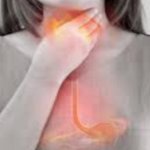Sexually transmitted diseases or sexually transmitted infections are generally acquired by sexual contact, the organism ( bacteria, viruses and parasites) that causes sexually transmitted infections may pass from a person in blood, semen or vaginal and other bodily fluids.
Sometimes the infection can be transmitted non sexually such as from mother to child during pregnancy or childbirth or through blood transfusions or shared needles.
- Read: FEVER: Symptoms, causes, prevention and control
- HEARTBURNS: Complications, causes, and control
It is possible to contract STDs from people who seem perfectly healthy and may not even know they have an infection. STDs or STIs can have a range of signs and symptoms including no symptoms, that’s why they may go unnoticed until complications occur or a partner is diagnosed.
Signs and symptoms
Sign and symptoms may appear a few days after exposure or it may take years before you have any noticeable problems depending on the organism. Symptoms include:
- Lower abdominal pain
- Fever
- Painful or burning urination
- Discharge from penis
- Unusual odds or smelling vaginal discharge
- Rashes over the trunk, hands or feet
- Unusual vaginal bleeding
- Sore, swollen lymph nodes particularly in the groin but sometimes more widespread
- Sore or bumps on the gentiles or in the oral or rectal area Causes Sexually transmitted diseases (STDs) or Sexual transmitted infections (STIs ) can be caused by
- Bacteria ( gonorrhoea, syphilis, chlamydia)
- Parasites ( Trichomoniasis)
- Virus ( human papillomavirus, genital herpes, HIV)
Sexual activity plays a role in spreading many other kinds of infections, although it is possible to be infected without sexually contact. Examples include the hepatitis A, B,C virus, shigella and Giardia intestinalis
Risk factors
Have sexual contact with multiple partners: The more people you have sexual contact with the greater your risk, this is true for concurrent partners as well as monogamous consecutive relationships.
Having unprotected sex: vagina or anal penetration by an infection partner who isn’t wearing a latex condom significantly increases the risk of getting STDs.
Read: ULCERS: Peptic Ulcer, Causes, Complications, and Control
Having a history of STIs: Having one sexually transmitted infections makes it easier for other sexually transmitted infections to take hold.
Being young: Half of the sexually transmitted infections occurs in persons between the age of fifteen to twenty-four.
Sharp objects: Sharing Needles, razor blade and other sharp objects spread many serious infections including HIV, hepatitis B, hepatitis c.
Misuse of alcohol or use of recreational drugs: Substances misuse can inhibit your judgement, making you more willing to participate in risky behaviour.
Rape or forced sexual activity: Dealing with rape or assault can be difficult, but it’s important to see a doctor as soon as possible so that you can receive screening, treatment and emotional support.
Note: Improper or inconsistent use of condom can also increase one’s risk of STIs or STDs
Transmission from mother to child
Certain sexual transmitted infections such as gonorrhoea, chlamydia, HIV, and syphilis can be passed from an infected mother to her child during pregnancy or delivery. STIs in infants can cause serious problems or even death, All pregnancy women should be screened for these infections and treated if any.
Complications
Possible complications include:
- Pelvic pain
- Eye inflammation
- Infertility
- Heart disease
- Pregnancy complications
- Arthritis
- Pelvic inflammatory disease
- Certain cancers such as HPV- associated cervical and rectal cancer.
Many people in the early stages of a sexually transmitted disease (STDs) or sexually transmitted infections (STIs) experience no symptoms, screening for STIs is important and necessary in preventing complications.
Prevention
There are several ways to avoid or reduce the risk of sexually transmitted diseases or infection.
- Abstain: The most effective way to avoid sexually transmitted infections is not having sex.
- Get vaccinated: Getting vaccinated early before sexual exposure is also effective in preventing certain types of sexually transmitted diseases, vaccines are available to prevent human papillomavirus (HPV), hepatitis A and B.
- Use condoms and dental dams consistently and correctly: Use a new latex condom or dental dams for each sex act, whether oral, vaginal or anal.
- Avoid drinking excessively and use of drugs: If you are under the influence, you are more likely to take sexual risks.
- Communication: Before any serious contact communication with your partner about practicing safer sex, be sure you specifically agree on what activities will and won’t be okay.
- Consider pre-exposure prophylaxis(PrEP): The food and drugs administration (FDA) has approved the use of the combination drugs emtricitabine plus tenofovir disoproxil fumarate ( Truvada ) and emtricitabine plus tenofovir alafenamide (descovy) to reduce the risk of sexually transmitted HIV infections in people who are at very high risk. Your doctor will prescribe these drugs for HIV prevention only if you don’t already have HIV infections.
Note: Never use an oil-based lubricant, such as petroleum jelly with a latex condom or dental dams. Condoms made from natural membranes are not recommended because they are not as effective at preventing STIs.
Conclusion
If sexually transmitted diseases are left untreated, it can cause severe health problems such as infertility, cancer, blindness and organ damage. Though sexually transmitted infections are common, if you are unsure about the right method to use in preventing or reducing the risk it is advisable to honestly talk with your partner to see a doctor. You can also go to a nearby medical laboratory to get your self tested to be sure you are free from STDs or STIs.
By: Peace Chigozie






















































